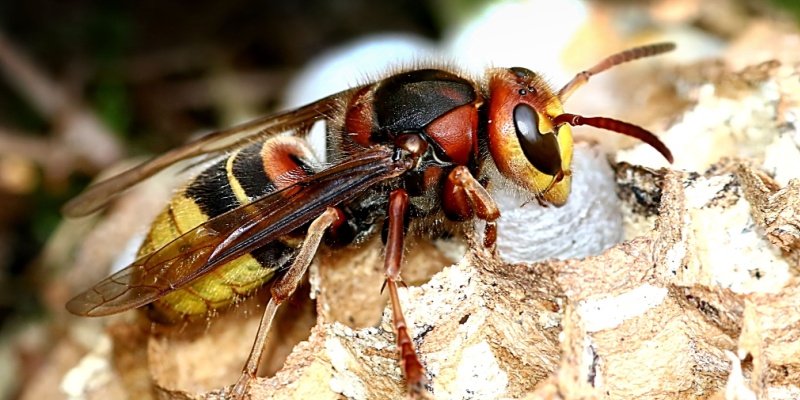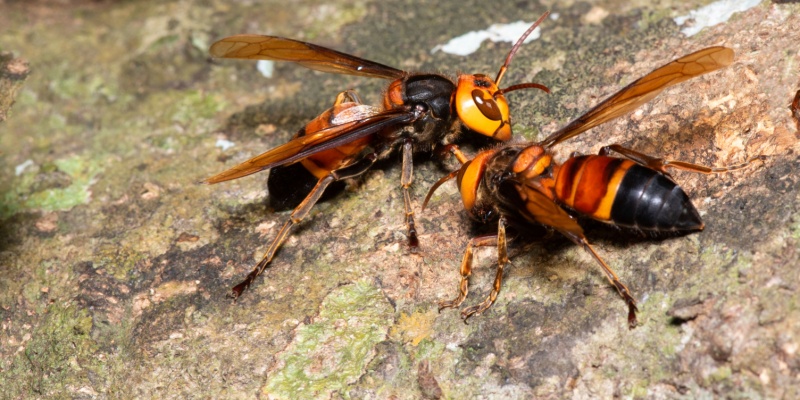Hornets, with their intimidating size and potent sting, can pose a significant threat to both property and personal safety. In Indianapolis, Indiana, where hornets are a common sight, homeowners often find themselves grappling with the challenge of managing hornet infestations. In this comprehensive guide, we explore the role of hornet exterminators in Indianapolis and provide actionable insights on how to address these buzzing invaders effectively.
Understanding the Hornet Menace
Hornets, belonging to the family Vespidae, are social insects known for their aggressive behavior and communal nesting habits. In Indianapolis, the most common hornet species encountered include the European hornet (Vespa crabro) and the bald-faced hornet (Dolichovespula maculata). These hornets construct large paper nests in trees, shrubs, eaves, and other sheltered locations, often in close proximity to human dwellings.
The Risks Associated with Hornet Infestations
Hornet infestations can pose various risks to homeowners and their properties. The presence of hornets near residential areas increases the likelihood of stings, which can cause pain, swelling, and allergic reactions in sensitive individuals. Furthermore, hornets may establish nests in attics, wall voids, and other structural cavities, leading to damage to building materials and insulation. Additionally, the aggressive defense of their nests by hornets can disrupt outdoor activities and create a nuisance for residents.
What Hornet Exterminators in Indianapolis Do
Hornet infestations can be both a nuisance and a danger to households. In Indianapolis, professional hornet exterminators provide crucial services to ensure homes and businesses remain safe from these aggressive pests. Here’s a look at what hornet exterminators in Indianapolis do to manage and eliminate hornet infestations effectively:
1. Inspection and Identification
The first step in hornet extermination is a thorough inspection. Exterminators will identify the type of hornet and locate their nests. Different species, such as the bald-faced hornet or the European hornet, require specific approaches for effective control.
2. Risk Assessment and Safety Planning
Hornet exterminators assess the risk posed by the infestation. This includes determining the proximity of the nest to human activity and evaluating the potential threat to residents or employees. Safety is a top priority, and exterminators use protective gear and equipment to minimize the risk of stings during the removal process.
3. Extermination Techniques
Professional exterminators use a variety of techniques to eliminate hornets. This can include:
- Chemical Treatments: Applying insecticides directly to the nest or using residual sprays around entry points.
- Dust Applications: Using insecticidal dust to penetrate and destroy the nest from within.
- Non-Chemical Methods: In some cases, exterminators might use traps or physically remove the nest if it is safe to do so.
4. Nest Removal
Once the hornets are exterminated, the nest needs to be removed. This is crucial, as old nests can attract other pests or new hornet colonies. Exterminators will carefully dismantle and dispose of the nest to prevent re-infestation.
5. Preventative Measures and Advice
To help prevent future infestations, hornet exterminators offer advice on preventive measures. This can include sealing entry points, removing potential nesting sites, and maintaining clean outdoor areas. They may also suggest ongoing monitoring and maintenance plans to ensure long-term protection.
6. Follow-Up Services
Effective hornet control often requires follow-up visits to ensure the infestation is fully resolved. Exterminators will re-inspect the area, check for any remaining hornet activity, and reapply treatments if necessary. This follow-up is vital for ensuring that the problem does not recur.
7. Emergency Response
In cases of severe infestations or immediate danger, hornet exterminators offer emergency services. Rapid response can be critical in situations where hornets pose a significant risk to people, particularly those who are allergic to stings.
Hornet infestations can present significant challenges for homeowners in Indianapolis, requiring prompt and effective intervention to mitigate risks and ensure peace of mind. Hornet exterminators like Trio Pest Control play a vital role in maintaining safe and comfortable environments by effectively managing hornet infestations. Our expertise in inspection, extermination, nest removal, and prevention ensures that residents and businesses can avoid the risks associated with these aggressive pests. For anyone dealing with a hornet problem, professional extermination services by Trio Pest Control provide peace of mind and a swift resolution to the issue.

